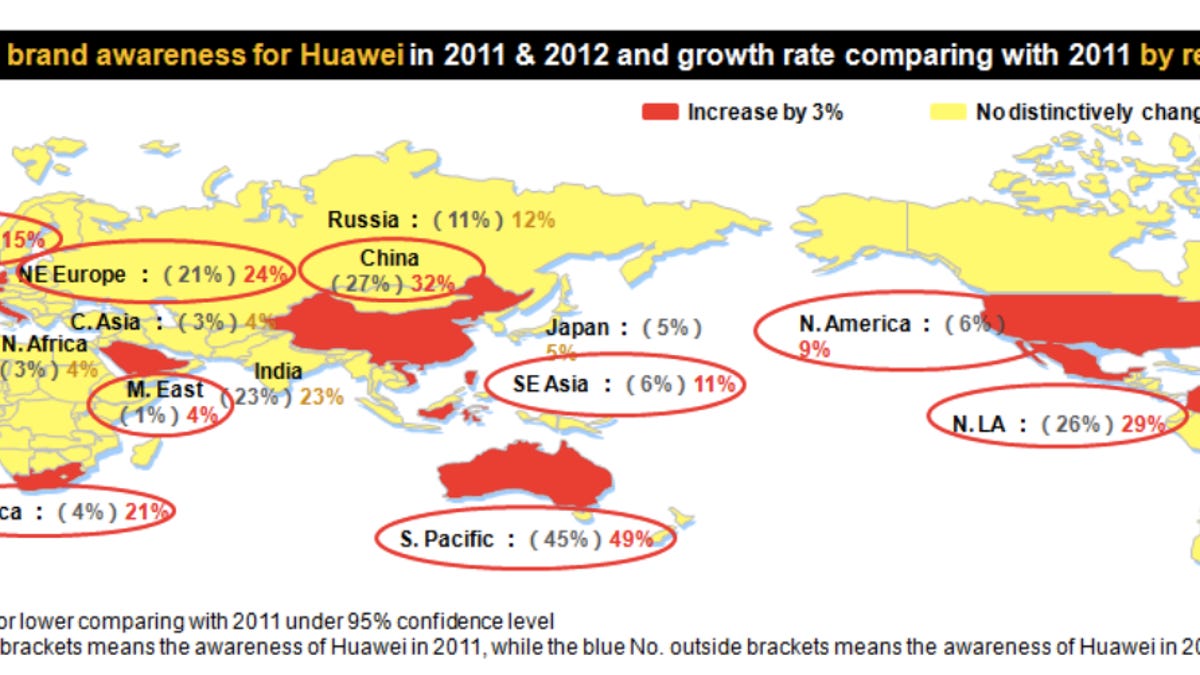Huawei desperate to crack the top-tier U.S. brands
Huawei is slowly making strides in the U.S. market, but the phone-maker's real goal is to become a household name.
SAN DIEGO--A year ago at CTIA (now known as MobileCon), Huawei announced
When I met with Huawei in San Diego earlier this week, company spokespeople said that consumers' brand awareness grew from 6 percent in 2011 to 9 percent in 2012.
The 3 percent growth isn't much to crow about, not when brand awareness hovers at 49 percent in the South Pacific region, 29 percent in northern Latin America, and spiked from 4 percent to 21 percent in the South East Africa market. Huawei also has work to do in its home country, where it has a 32 percent brand awareness rating.
Yet Huawei still aspires to hit the 60 percent mark at the end of five years, calling it an "achievable goal."
"We still have a long way to go" James Jiang, Huawei's executive vice president of product, told me during our interview, "but we're working on it." Jiang added that the U.S. is a strategy market for Huawei.
Huawei entered the U.S. in 2007 with unbranded feature phones and USB dongles for predominantly prepaid carriers. Since then, it has been steadily building relationships with carriers, adding devices like smartphones, hot spots, and even a tablet to mid-tier and top-tier carriers, some of which even get Huawei's logo painted onto the device.
"Every new vendor has to earn their spot," Huawei's Vice President of External Affairs Bill Plummer told me during an interview earlier this summer. "It doesn't happen overnight."
Huawei has even made progress with the nation's largest carrier, offering the Verizon Wireless Home Phone Connect; the device sold 1 million units, Jiang said this week.
Topping its difficulties in its handset business, Huawei is facing extreme pushback from the U.S. government, who this week warned companies not to use Huawei's mobile network equipment amidst spying concerns.
Huawei is currently the world's third-largest network infrastructure supplier, behind Ericsson and Nokia Siemens. Bad news for Huawei's global image means bad news for its mobile phone aspirations as well.
U.S. brand awareness may rise into the double digits as a result of the unwanted espionage fears, but unless Huawei can keep its consumer campaign trained on the positive, increased brand awareness may not lead to increased handset sales.
Catch all the latest news from CTIA 2012.


